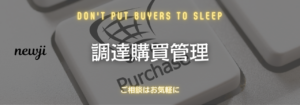- お役立ち記事
- Basics, examples, and recent trends of plastic decoration technology

Basics, examples, and recent trends of plastic decoration technology

目次
Understanding Plastic Decoration Technology
Plastic decoration technology is an essential process in the manufacturing industry, particularly for enhancing the appearance and functionality of plastic products.
These technologies are widely used in various sectors, including automotive, consumer electronics, and household goods.
The purpose of plastic decoration is not just to make products visually appealing but also to add specific features like durability, resistance to abrasion, and UV protection.
In this article, we will explore the basics of plastic decoration technology, examine various examples, and discuss recent trends in the industry.
Understanding these elements can help manufacturers decide on the right techniques and processes for their products, leading to more effective and efficient operations.
Basics of Plastic Decoration Technology
Plastic decoration technology involves different techniques to modify the surface of plastic products.
These modifications include altering the texture, color, and overall appearance.
The primary aim is to enhance the market appeal of a product while sometimes improving its physical properties.
Different processes can be used, depending on the desired outcome.
Some common techniques include:
Printing Techniques
Plastic printing involves imparting graphics or texts onto a plastic surface.
Various methods are used in printing, such as screen printing and digital printing.
– **Screen Printing**: This traditional method involves forcing ink through a stenciled mesh screen to create an image on the surface.
It’s commonly used for bold images and logos on products like bottles and signage.
– **Digital Printing**: More recent in development, digital printing uses digital images that are directly printed onto the plastic surface.
This method allows for more detailed graphics and is used for products requiring high-resolution designs.
Molding Techniques
Achievements in molding techniques have expanded the possibilities of plastic decoration.
Several processes can be employed here, including:
– **In-Mold Decoration (IMD)**: This involves placing a decorative graphic into a mold before injecting plastic, embedding the design into the product surface.
IMD is often used in automotive interiors and various consumer electronics.
– **Insert Molding**: In this process, pre-decorated films or parts are placed into the mold before plastic injection, allowing for complex designs and added material properties.
Common applications include cell phone casings and other electronics.
Coating Techniques
Coating techniques involve applying a finishing layer to a plastic surface, often enhancing appearance and adding protective qualities.
– **Spray Coating**: Used to apply fine layers of paint or other materials to plastic parts.
It is a versatile technique that can offer different finishes, from glossy to matte.
– **Plasma Coating**: This technology uses plasma energy to apply a fine, uniform layer to the surface, enhancing adhesion and durability while allowing for unique textures.
Examples of Plastic Decoration Technology
There are varied applications of plastic decoration technology across different industries.
Here are a few notable examples:
Automotive Industry
In the automotive sector, plastic decoration is pivotal for both interior and exterior components.
Manufacturers use these technologies to create dashboards and trim that are aesthetically pleasing while being tactile and functional.
High-end car interiors often use IMD and insert molding for parts like control panels and consoles.
These techniques ensure a seamless integration of functionality and style.
Consumer Electronics
Electronic devices heavily rely on plastic decoration to appeal to consumers.
Smartphones, tablets, and laptops often feature digitally printed graphics and logos, adding sophistication to these devices.
IMD is also employed for durable and intricate design on electronics casings.
Packaging Industry
Product differentiation in the crowded marketplace often depends on packaging appeal.
Plastic packaging uses screen printing and digital printing to present vibrant designs.
These techniques enhance branding and consumer engagement by providing attractive package designs.
Recent Trends in Plastic Decoration Technology
As industries continue to evolve, so do plastic decoration technologies.
Sustainable Practices
Sustainability is becoming a central focus in the plastic decoration industry.
Manufacturers are now opting for eco-friendly materials and processes that reduce environmental impact.
The shift towards using water-based inks and biodegradable coatings is gaining traction, aligning decoration processes with green manufacturing trends.
Advanced Technology Integration
The integration of new technologies, such as augmented reality (AR) and virtual reality (VR), is fostering innovation in plastic decoration.
These technologies facilitate the design and customization processes, enabling companies to offer personalized products.
For instance, allowing customers to visualize designs on their devices before production is becoming more common.
Increased Use of Digital Printing
Digital printing is gaining widespread adoption due to its capabilities of producing high-quality, detailed designs quickly and efficiently.
This trend is facilitated by advancements in printing technology that enable faster production speeds and reduced costs.
Conclusion
Plastic decoration technology continues to be integral to various industries, offering both functional and aesthetic enhancements to plastic products.
From printing to coating, numerous techniques are available depending on the desired outcome and application.
Reflecting on the industry’s current state, a trend towards sustainability and technological integration is evident.
Manufacturers who adapt to these trends are likely to see continued success in delivering innovative and appealing products to consumers.
 資料ダウンロード
資料ダウンロード
QCD管理受発注クラウド「newji」は、受発注部門で必要なQCD管理全てを備えた、現場特化型兼クラウド型の今世紀最高の受発注管理システムとなります。
 NEWJI DX
NEWJI DX
製造業に特化したデジタルトランスフォーメーション(DX)の実現を目指す請負開発型のコンサルティングサービスです。AI、iPaaS、および先端の技術を駆使して、製造プロセスの効率化、業務効率化、チームワーク強化、コスト削減、品質向上を実現します。このサービスは、製造業の課題を深く理解し、それに対する最適なデジタルソリューションを提供することで、企業が持続的な成長とイノベーションを達成できるようサポートします。
 製造業ニュース解説
製造業ニュース解説
製造業、主に購買・調達部門にお勤めの方々に向けた情報を配信しております。
新任の方やベテランの方、管理職を対象とした幅広いコンテンツをご用意しております。
 お問い合わせ
お問い合わせ
コストダウンが利益に直結する術だと理解していても、なかなか前に進めることができない状況。そんな時は、newjiのコストダウン自動化機能で大きく利益貢献しよう!
(β版非公開)





